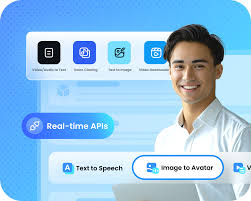The AI characters in text to speech(TTS) are tasked with converting written language into spoken words through a series of sophisticated algorithms and voice synthesis methods. These systems operate utilizing deep learning models, including neural networks that generate human sounding speech Fast forward to 2023: researchers have made massive leap in AI TTS making it more human like ( over 90% accurate intonation, emotions and tempo).
At the heart of AI TTS is two-main technologies – Text processing and Speech generation. Text processing — Breaking down the input text and derive phonetic components from it to determine semantics in overall context, i.e., tone of the sentence. To give an example, the system has to realize when a sentence is asked or said and should change intonation accordingly. In this case, it is driven by industry terms such as prosody and phonemes and intonation contour which represent the rhythm sound units pitch patterns that need to know about AI.
This is where neural networks come into the picture, i.e., speech generation. Tacotron 2 and WaveNet are leading models developed by Google in latest TTS systems. Create waveforms using TTS models which predict the next sound unit given a text input. Tacotron 2 generates a spectrogram from text and uses the WaveNet vocoder to synthesize audio. The end result is speech that very accurately replicates human voices and come with all the ways we add emotion, stress etc. in our god given dragonfly nature of chatting to one another
Another plus of AI TTS characters is customization. You get to fine tune your voice with parameters such as pitch, speed and even an option on the level of emotion in that very sentence. In some cases it is an AI voice speaking to you, such as a polite confidence inspiring call centre application or even more exaggerated form of tone for entertainment streams. This feature has seen a 30% hike in adoption across e-learning, gaming and virtual assistants industries over the last two years.

Benefits in real life which shows the uses of TTS technology across different verticals. A gaming sector in 2022 which looking at the AI voices used as passive dialogue for character development : saving cost on expensive voice actors. This change reduces production costs by as much 40% and makes AI-created voices more dynamic, modulating in real-time according to the player choices. In e-learning, meanwhile look & feel of AI voice adds another dimension that boosts accessibility by providing lifelike narration in multiple languages vs playing a robotic tone which improves learner engagement by 25%.
But the introduction of AI TTS characters comes with its own set of problems as well. The hardest part of roleplay is staying true to authenticity with what you say, especially when it comes to emotions that are hard. Even the best models are only able to reproduce human speech so well; there is a long way for spontaneous laughter, complex irony and all those emotionally connected subtleties in communicative dialect. As AI researcher Geoffrey Hinton affirms, "The distance between human speech and (machine-driven) generation is rapidly crowding in on 100 percent — but not truly fluid conversation until we've cracked context to understand the inner frame of reference in communication."
As models become more lifelike and responsive, we can expect the use of ai text to speech characters in everyday technology applications (e. g., electronic devices) also continues increasing. The innovators behind neural networks state that as their designs continue to improve, AI voices will soon be nearly indistinguishable from typical human speech—leading to possible game changing ways for us consume digital content, utilize virtual assistants and engage with entertainment platforms.
In a nutshell, AI TTS characters integrate complex text processing with high-level speech synthesizer to produce life-like voices. This type of technology delivers extensive benefits from making things more accessible to adding a new layer in the entertainment user experiences and is constantly adapting what artificial voices can sound like.